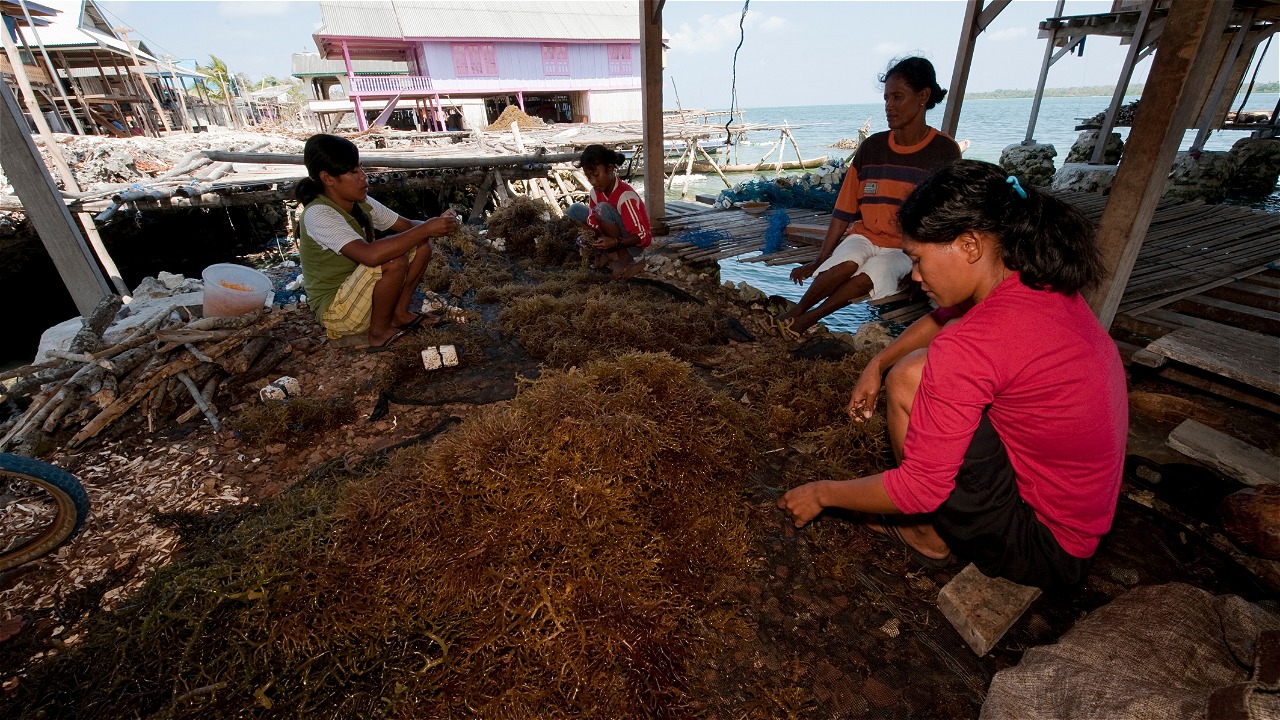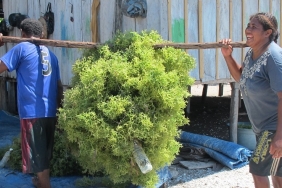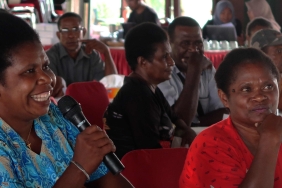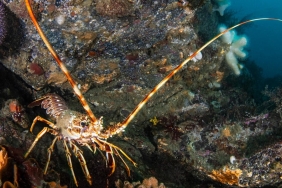MAPPING SOLUTIONS FOR IMPROVING SEAWEED FARMING IN WAKATOBI
By: Idham Malik (Aquaculture Staff, WWF-Indonesia)
Read Previously: Water Quality Study Reveals Causes of Kotoni Seaweed Famine in Wakatobi
"The way to go is to maintain the current cultivation, which is the spinosum type. The nitrate and phosphate standards of spinosum are very low, so it can live even in nutrient-poor conditions," said Dr. Ir. Nursidi Latief, M. Si., from Politani Pangkep, in the Seminar on Socialization of Water Quality Data Collection Results of Wakatobi Seaweed Cultivation Area at Wakatobi Hotel (29/08/2018) in Wanci, Wakatobi, Southeast Sulawesi. This seminar revealed what caused the death of kotoni cultivation in Wakatobi, and tried to explore solutions to it.
"However, it should also be noted that spinosum is like cassava on land. It is fast-growing, but quite voracious for nutrients in the water. Hence, we need to anticipate the possibility of decreasing nutrient content in the waters with the increasingly massive cultivation of seaweed in the waters," he continued in front of the cultivators.
Meanwhile, kotoni cultivation can only be done in the rainy season, when the nitrate content is sufficiently fulfilled, and in locations close to settlements, assuming it is richer in nutrients. However, it faces a major problem, namely the difficulty of sustaining seedlings in the dry season.
The second thing that must be considered together is a methodology to enrich the nutrients in seaweed cultivation waters. This can be discussed with other agencies, such as the Department of Agriculture and the Department of Animal Husbandry, to make a joint plan. agricultural development close to the seaweed farming area, so that there is a supply of organic matter from the land, which is carried by rain.
Glimpse of Seaweed Cultivation Improvement in Wakatobi
Since 2015, WWF-ID's Southern Eastern Sulawesi Subseascape (SESS) program and WWF-Indonesia's aquaculture program have been involved in improving seaweed farming in Wakatobi. Three groups were found that have the potential to work together to improve cultivation, namely Lagundi in Liya Mawi Village on Wanci Island, Sarope in Ollo Selatan Village and Dewara in Derawa Village on Kaledupa Island.
An initial approach with a Focus Group Discussion (FGD) was conducted with WWF-ID's Training and Science team with the farmers of the three groups to explore the problems and temporary solutions to improve aquaculture in Wakatobi. In addition, a gap assessment or level of gap with WWF-ID's Seaweed Cultivation BMPs was collected.
The result of the FGD was an agreement on the application of cotoni cultivation using tissue culture seedlings, to strengthen the group nursery. After the FGD, in December 2015, a trial of cotoni cultivation using local seedlings was also conducted.
Therefore, a few months later, in mid-2016, a trial of seaweed cultivation using tissue culture seeds from BBPBAL (Center for Seawater Aquaculture) Lampung was carried out in three cultivation areas, namely in the waters of Liya Mawi Village on Wanci Island, the waters of Ollo Selatan Village in Kaledupa, and the waters of Derawa Village in Kaledupa.
However, the development of kotoni seedlings from Lampung did not develop well, only about 3 - 4 cycles old. The obstacle faced, in the waters of Liya and South Ollo, is that the seedlings are attacked by cat hair pests, which are fine hairs attached to the stem of the seaweed thallus. It is quite surprising, because, only kotoni is attacked by cat hair, spinosum seaweed is not attacked and continues to grow well.< br />
Seeing these conditions, the WWF-ID team began to run out of ideas, and preferred to develop groups and market opportunities. The intervention was more on how to open the insights of group members, to further optimize cooperation between farmers to mobilize joint economic strength. At that time, an entrepreneur from Makassar was brought in to explain more about the concept of OVOP (One Village One Product), motivating the group to focus on product development.
Alternatives for Kotoni Seaweed Cultivation Today
Other alternatives are offered, namely the application of Gracilaria gigas cultivation, but this must first be carried out intensive research to ensure the success of Gracilaria gigas cultivation.
In addition, further research needs to be done on the environmental carrying capacity for spinosum cultivation in Wakatobi. So that farmers understand the extent to which spinosum aquaculture with the best production can be developed sustainably in Wakatobi.
The Seminar on Socialization of Water Quality Data Collection Results of Wakatobi Seaweed Cultivation Area was closed with a question mark, what will be the fate of spinosum cultivation in the future? Will it share the same fate as kotoni? This has become a burden on the minds of cultivators and the local government. It is also a question that will likely encourage them to evaluate the practice of spinosum aquaculture so far.





